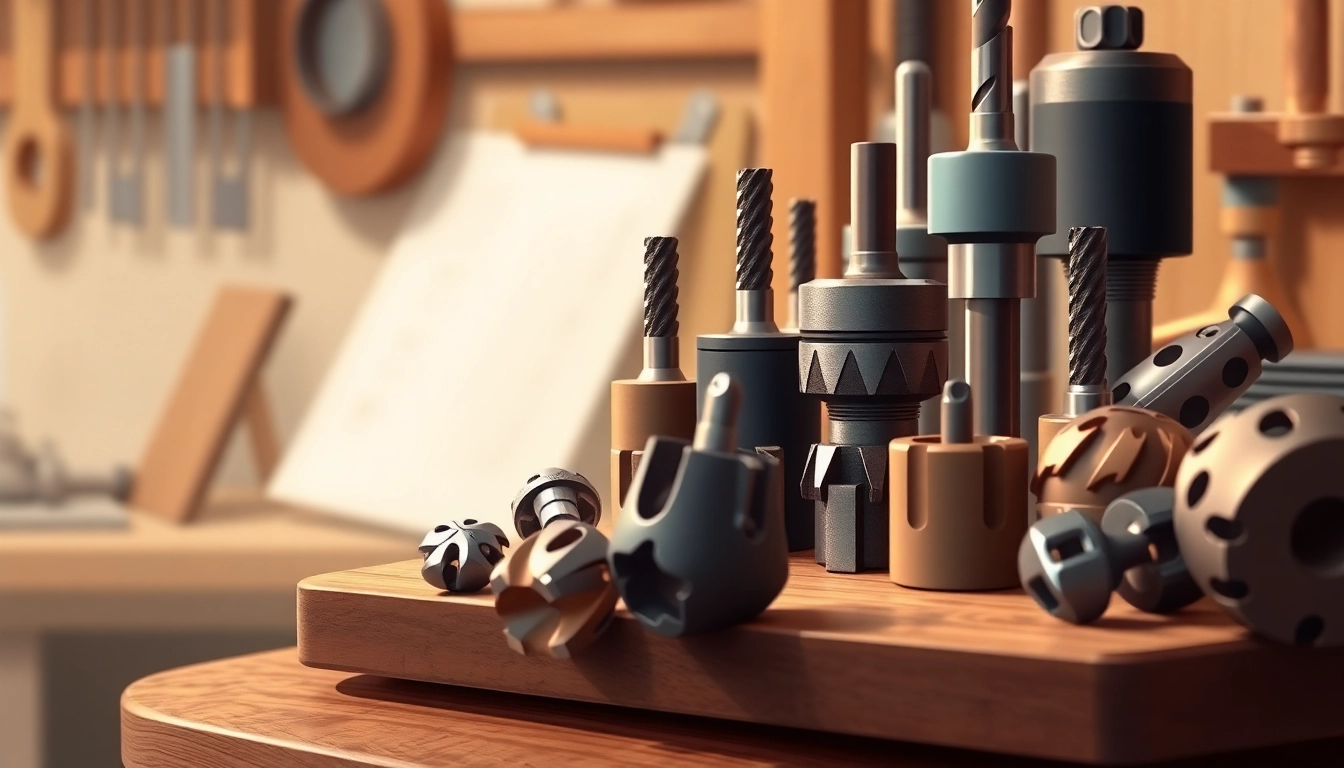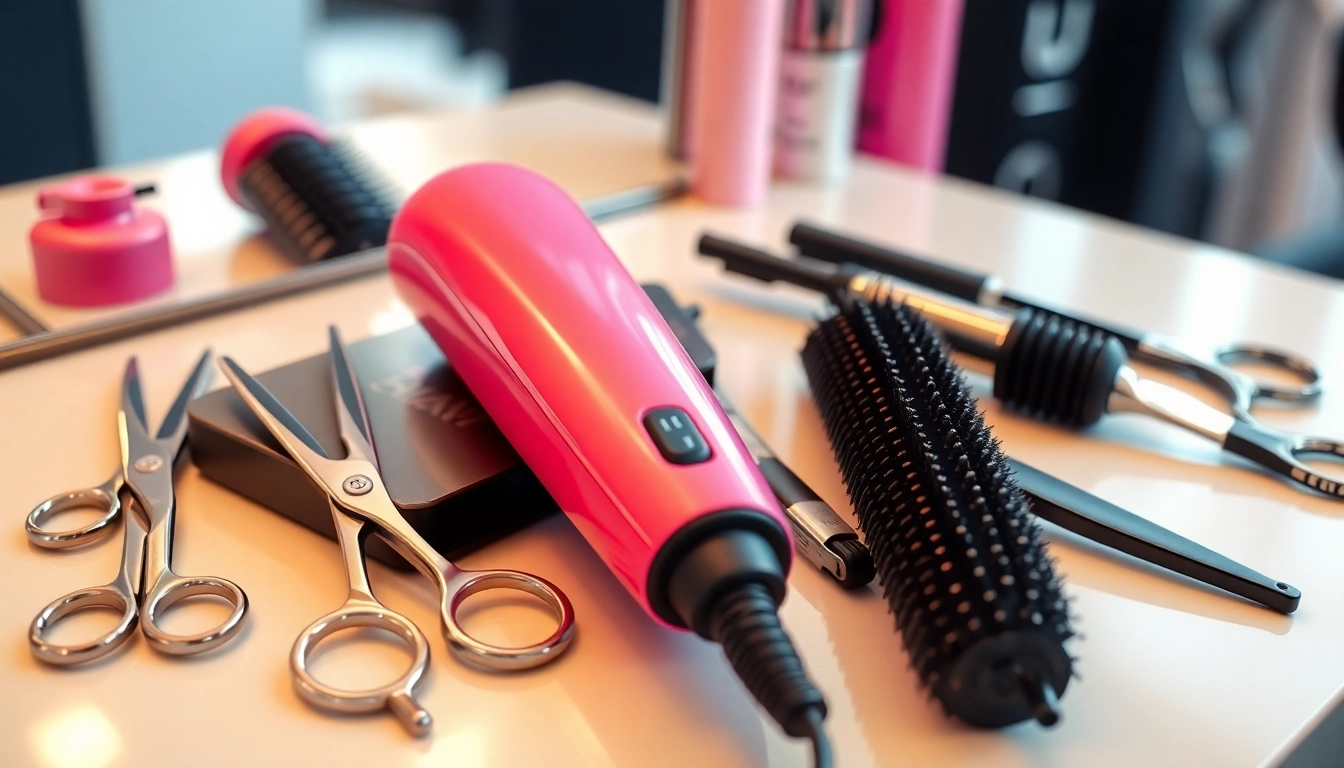Understanding Drill Chucks
What is a Drill Chuck?
A drill chuck is a critical component used in power drills and other rotary tools to securely hold drill bits and other cutting tools. It serves as the grip that allows the drill to efficiently apply torque to the bit. Drill chucks can vary in design and functionality but primarily exist to facilitate the precision and security of the tool bit being used. This is essential in ensuring accurate drilling, preventing slippage, and prolonging the life of both the chuck and the bit.
Types of Drill Chucks
Drill chucks are available in several types, each designed for specific applications and user preferences. Understanding the differences can help users choose the right type for their needs:
- Keyed Drill Chucks: These require a chuck key to tighten or loosen the grip on the drill bit. They offer superior clamping force and are less likely to loosen under heavy use.
- Keyless Drill Chucks: As the name suggests, these allow users to change bits without the need for a key. This type is favored for its convenience and speed, especially in situations where quick changes are needed.
- Hybrid Drill Chucks: These combine features of both keyed and keyless types for versatility. They may include a ratcheting mechanism or an internal locking system that secures the bit while providing easier access for adjustments.
- Specialty Chucks: These are designed for particular applications, such as providing a micro-adjustment for precision work, or accommodating unique bit shapes and sizes.
Key Features of Quality Drill Chucks
When selecting a drill chuck, several key features can influence its performance:
- Grip Strength: A high-quality drill chuck should provide reliable grip on bits to prevent slippage during use.
- Materials: Look for chucks made from durable materials that can withstand the rigors of heavy use without deforming or breaking.
- Precision: Chucks should offer minimal runout, meaning that the drill bit spins true and doesn’t wobble, which is crucial for making precise holes.
- Ease of Use: Keyless options or those with quick-release mechanisms are much easier for frequent bit changes.
Choosing the Right Drill Chuck
Factors to Consider When Selecting a Drill Chuck
Choosing the right drill chuck involves considering several factors that match your specific needs:
- Drill Type: The chuck you choose must be compatible with the type of drill you’re using, whether it’s a corded, cordless, or industrial power drill.
- Bit Size Capacity: Ensure that the chuck you select can accommodate the sizes of drill bits you plan to use.
- Taper Shank vs. Threaded: Determine whether your drill uses a taper shank or threaded connection, as this will influence your selection.
Compatibility with Your Power Tools
Compatibility is crucial when selecting a drill chuck. Different power tools may have specific requirements:
- Torque Specifications: Ensure the chuck can handle the torque specifications of your drill, especially for heavier-duty applications.
- Spindle Sizes: Check the spindle size of your drill since chucks come in various sizes like 1/2 inch, 3/8 inch, and others. Most drills will be either 1/2″-20 or 3/8″-24 thread types.
Common Sizes and Thread Types
Drill chucks are typically available in various sizes and thread types:
- Common Sizes: The most common sizes for drill chucks include 1/2 inch (for heavy-duty drills), 3/8 inch (for standard drills), and 1/4 inch (often for smaller, lighter drills).
- Thread Types: The most common threads are 1/2″-20 and 3/8″-24. It’s crucial to match the chuck thread type with your drill’s spindle to ensure a secure fit.
Installation and Maintenance
How to Install a Drill Chuck?
Installing a drill chuck is an important aspect of ensuring proper functionality. Follow these steps:
- Before You Begin: Make sure your drill is unplugged or its battery is removed to avoid accidents.
- Remove the Old Chuck: Use the chuck key if necessary to loosen the screws securing the old chuck. If it’s a keyless design, simply turn it counterclockwise until it comes free.
- Attach the New Chuck: Align the new chuck with the spindle and turn it clockwise. Ensure it’s secure by tightening with the chuck key or hand-tightening if keyless.
- Test the Installation: Insert a drill bit and check for stability. It should hold the bit firmly without wobbling.
Best Practices for Maintaining Your Drill Chuck
Proper maintenance of your drill chuck can extend its life and keep its performance at peak levels:
- Regular Cleaning: Keep the chuck clean and free from debris. Dirt and grime can affect its grip on the bit and overall performance.
- Lubrication: Occasionally lubricate the chuck, especially if it’s a keyed chuck, to keep it functioning smoothly.
- Inspection: Regularly inspect the chuck for wear signs, such as cracks or failings in the gripping mechanism.
Signs It’s Time to Replace Your Drill Chuck
Recognizing when to replace your drill chuck is vital for maintaining performance:
- Worn or Damaged Threads: If the threads become stripped or damaged, it may no longer securely attach to the drill.
- Lack of Grip: If bits frequently slip or aren’t held tightly, it may indicate that the chuck needs replacement.
- Excessive Wobbling: A noticeable wobble in the bit during operation can be a sign of a worn chuck.
Performance Comparison
Comparing Keyed vs. Keyless Drill Chucks
When choosing between keyed and keyless drill chucks, consider the following differences:
- Grip and Security: Keyed chucks typically provide a more secure grip, especially under heavy use, whereas keyless chucks are more convenient for quick bit changes.
- Ease of Use: Keyless chucks allow for faster adjustments, which can be advantageous on job sites requiring frequent bit changes.
- Cost: Generally, keyed chucks are associated with higher-quality models and may cost more than their keyless counterparts.
Performance Metrics and Ratings
When assessing drill chucks, performance metrics can include:
- Grip Strength: How strongly the chuck grips various bit sizes without slippage.
- Runout: Measure of wobble or wobbliness during operation; lower runout indicates higher precision.
- Durability: Assess how long a chuck lasts under varying degrees of usage and stress.
Brand Comparisons: Which Drill Chuck Reigns Supreme?
Several brands are renowned for their quality drill chucks. Some notable comparisons include:
- Jacobs: Known for durable, high-quality keyed and keyless chucks, often preferred in professional settings.
- Albrecht: Renowned for precision chucks, particularly good for high-accuracy applications.
- Röhm: Their innovative designs and configurations cater to various high-performance drilling needs.
FAQs and Troubleshooting
Common Drill Chuck Problems and Solutions
Here’s how to troubleshoot frequent issues with drill chucks:
- Problem: Bit slippage.
- Solution: Ensure the chuck is tightened adequately; check for wear or damage to chuck jaws.
- Problem: Chuck won’t loosen.
- Solution: If moments of heavy torque are applied, the chuck may seize. Use penetrating oil if necessary.
How to Choose Between Different Drill Chuck Options?
When faced with multiple options, consider the following:
- Assessing Application Needs: Consider the materials you’ll be drilling, the frequency of use, and whether you need precision.
- Budget: Higher-priced chucks often offer better performance and lifespan, but evaluate based on your specific needs and usage.
Expert Tips on Using Drill Chucks Effectively
Here are some expert tips to maximize the effectiveness of your drill chuck:
- Pre-Drill Smaller Holes: If accuracy is crucial, pre-drill small pilot holes to guide your main drill bit.
- Use the Correct Speed: Match your drill speed to the material and bit type for optimal performance.
- Regularly Inspect: Continuously inspect your chuck for wear and ensure that bits are correctly inserted and tightened for safety.




